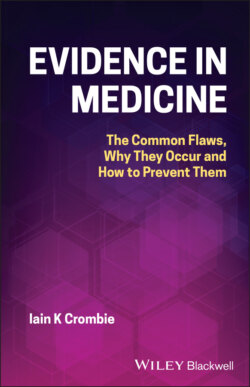Читать книгу Evidence in Medicine - Iain K. Crombie - Страница 21
Evidence that the Randomisation Process Is Subverted
ОглавлениеRandomisation will usually produce two treatment groups with similar sample sizes, but only rarely will they have identical numbers of patients. A review found that many more trials had groups with identical sample sizes than could occur by chance [11]. The conclusion is that someone may have modified the randomisation sequence to prevent disparity in the size of the two groups, an action described as ‘forcing cosmetic credibility’ [11].
Randomisation should also result in the two groups being similar at baseline on characteristics such as age and clinical signs and symptoms. Small differences between groups commonly occur, but many trials have much more marked imbalances between groups than would be expected by chance. This has been documented for participant age [12] and for important clinical predictors of outcome [13]. These imbalances suggest that the randomisation sequence has been altered, with the likely consequence that the estimates of treatment effect will be biased.
A few studies have explored whether researchers admit to deciphering the randomisation sequence. Schulz and colleagues found that many clinicians try to decode the sequence [14]. Paludan‐Muller and colleagues [15] reviewed surveys of the reasons why clinicians do this. The most common reasons were that a doctor had a preference for a treatment for a particular patient, or had a desire to show that the new treatment was effective. Some researchers admitted to distorting the randomisation sequence by entering two or more patients at the same time, so that a particular patient could be allocated to a preferred treatment [15]. In some trials the treatment allocation codes are delivered in sealed envelopes [16], enabling some clinicians to subvert the randomisation by opening the envelopes before entering the patients [15]. Whatever the method of manipulation, deviations from random allocation could lead to bias.
